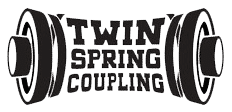Selecting the Right Couplings for Industrial Machinery – Considerations and Guidelines
Table of Contents
When selecting the right couplings for industrial machinery, several considerations and guidelines must be taken into account to ensure optimal performance and longevity. As a consumer looking to purchase industrial couplings, understanding these factors will help in making an informed decision.
Understanding Couplings
Couplings are mechanical devices used to connect two shafts together at their ends for the purpose of transmitting power. They are crucial components in industrial machinery, ensuring smooth operation and preventing damage due to misalignment or mechanical stress.
Types of Couplings
There are various types of couplings, each designed for specific applications:
- Rigid Couplings: These provide a solid connection between two shafts, allowing no movement. They are suitable for applications where precise shaft alignment is possible and necessary.
- Flexible Couplings: These accommodate some degree of misalignment, movement, or deflection. They are ideal for applications where shafts may not be perfectly aligned or where there is a need to absorb shocks.
Key Considerations
When selecting a coupling, several factors should be considered:
- Application Requirements: Determine what the coupling needs to do. This includes the torque it needs to transmit, the speed of operation, and whether it needs to be maintenance-free or backlash-free.
- Environmental Conditions: Consider the temperature, humidity, and presence of corrosive substances in the operating environment. These factors can significantly affect the performance and lifespan of a coupling.
- Load and Speed: The coupling must handle the load capacity, including the torque and axial and radial loads, as well as the speed of the rotating equipment.
- Misalignment: Identify the types of misalignment that need to be corrected, such as angular, parallel, or axial misalignment. Flexible couplings are generally better suited for applications with misalignment.
- Installation and Maintenance: The ease of installation and maintenance is crucial. Some couplings require frequent maintenance, while others are designed to be maintenance-free.
- Cost: While cost is an important factor, it should not be the sole determinant. A cheaper coupling may not last as long or perform as well as a more expensive option.
- Type of Equipment: The specific equipment and its intended use can influence the choice of coupling. For instance, couplings for pumps may have different requirements than those for compressors or conveyors.
Guidelines for Selection
Step 1: Define the Requirements
Start by clearly defining the requirements of your application. Ask yourself what the coupling needs to accomplish. Consider the torque, speed, and environmental conditions. Determine if the coupling needs to be flexible or rigid, and whether it should be maintenance-free.
Step 2: Evaluate Environmental and Accessibility Factors
Analyze the environmental conditions where the coupling will operate. Consider factors like temperature and corrosive environments. Additionally, evaluate the accessibility for installation and maintenance. Some couplings may require more space or easier access than others.
Step 3: Consider Mechanical Performance
Assess the mechanical performance requirements, such as torque, speed, and cushioning capability. Decide whether you need a coupling that offers high precision and torque transmission or one that can absorb shocks and misalignments.
Step 4: Select the Appropriate Type
Based on the requirements, choose between rigid and flexible couplings. Rigid couplings are suitable for precise alignment, while flexible couplings are better for applications with misalignment or shock absorption needs.
Step 5: Ensure Proper Installation
Proper installation is crucial for the performance and longevity of the coupling. Ensure that the coupling is mounted correctly on the shaft, considering factors like keyways and locking mechanisms. Improper installation can lead to failure and costly downtime.
Selecting the Right Couplings for Industrial Machinery – Considerations and Guidelines Conclusion
Selecting the right coupling for industrial machinery involves a careful evaluation of various factors, including application requirements, environmental conditions, and mechanical performance. By understanding these considerations and following the guidelines outlined, you can make an informed decision that ensures the optimal performance and longevity of your machinery. Always consult with a coupling manufacturer or engineer for further guidance and recommendations tailored to your specific needs.

